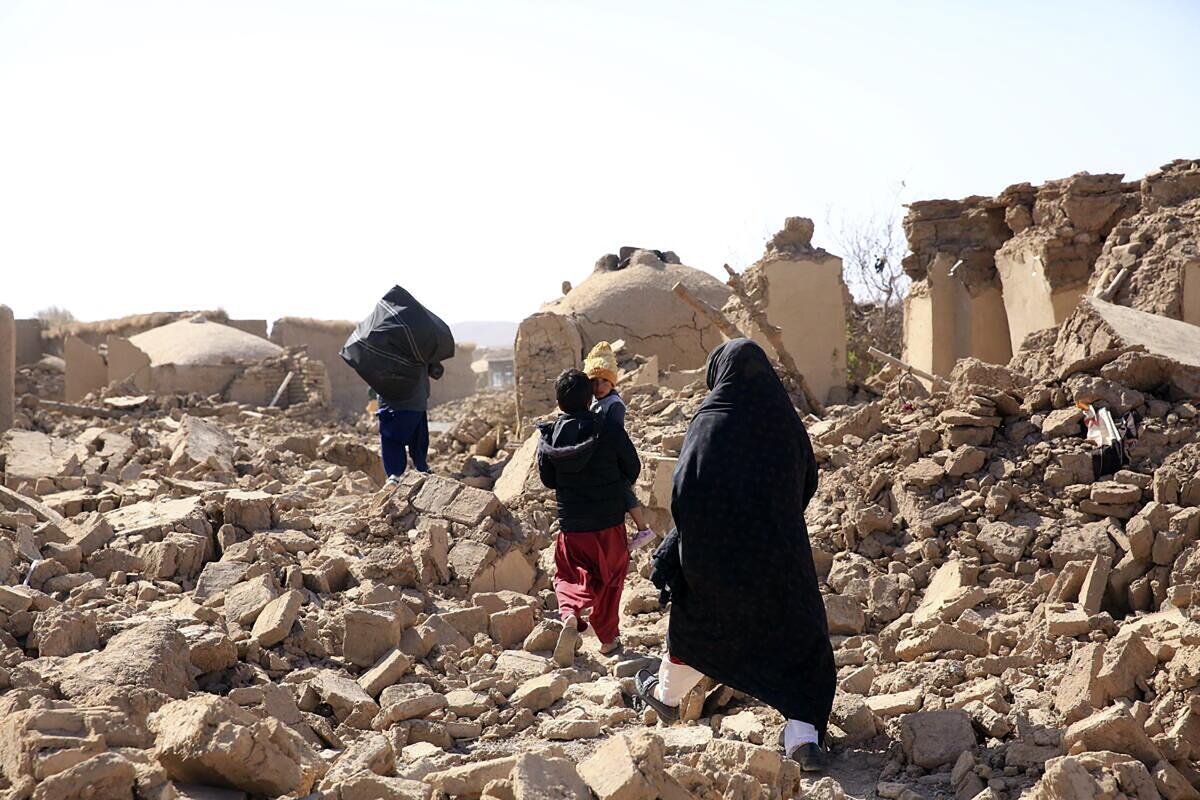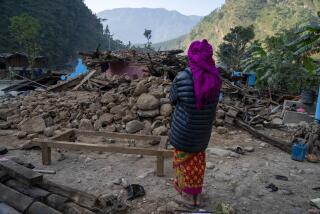Powerful earthquake shakes west Afghanistan a week after devastating quakes hit same region

- Share via
ISLAMABAD, Pakistan — A powerful magnitude 6.3 earthquake struck western Afghanistan on Sunday, just over a week after strong quakes and aftershocks killed thousands of people and flattened entire villages in the same province.
The U.S. Geological Survey said the latest quake’s epicenter was about 21 miles outside Herat, the provincial capital, and five miles below the surface.
Save the Children said four people have died and that Herat Regional Hospital has received 153 injured. Everything in the Baloch area of Rabat Sangi district has collapsed. Several villages have been destroyed, according to the aid group. Authorities have given lower casualty numbers.
Sayed Kazim Rafiqi, 42, a Herat city resident, said he had never seen such devastation before with the majority of houses damaged and “people terrified.” Rafiqi and others headed to the hospital to donate much-needed blood.
“We have to help in any way possible,” he said.
Trump-backed Atty. Gen. Jeff Landry wins Louisiana governor’s seat back for Republicans. Termed-out John Bel Edwards is the only Democratic governor in the Deep South.
The earthquakes on Oct. 7 flattened whole villages in Herat, in one of the most destructive quakes in the country’s recent history.
More than 90% of the people killed a week ago were women and children, U.N. officials reported Thursday.
Taliban officials said the earlier quakes killed more than 2,000 people across the province. The epicenter was in Zenda Jan district, where the majority of casualties and damage occurred.
The initial quake, numerous aftershocks and a second magnitude 6.3 quake on Wednesday flattened villages, destroying hundreds of mud-brick homes that could not withstand such force. Schools, health clinics and other village facilities also collapsed.
Besides rubble and funerals after that devastation, there was little left of the villages in the region’s dusty hills. Survivors are struggling to come to terms with the loss of multiple family members and in many places, living residents are outnumbered by volunteers who came to search the debris and dig mass graves.
More to Read
Sign up for Essential California
The most important California stories and recommendations in your inbox every morning.
You may occasionally receive promotional content from the Los Angeles Times.











